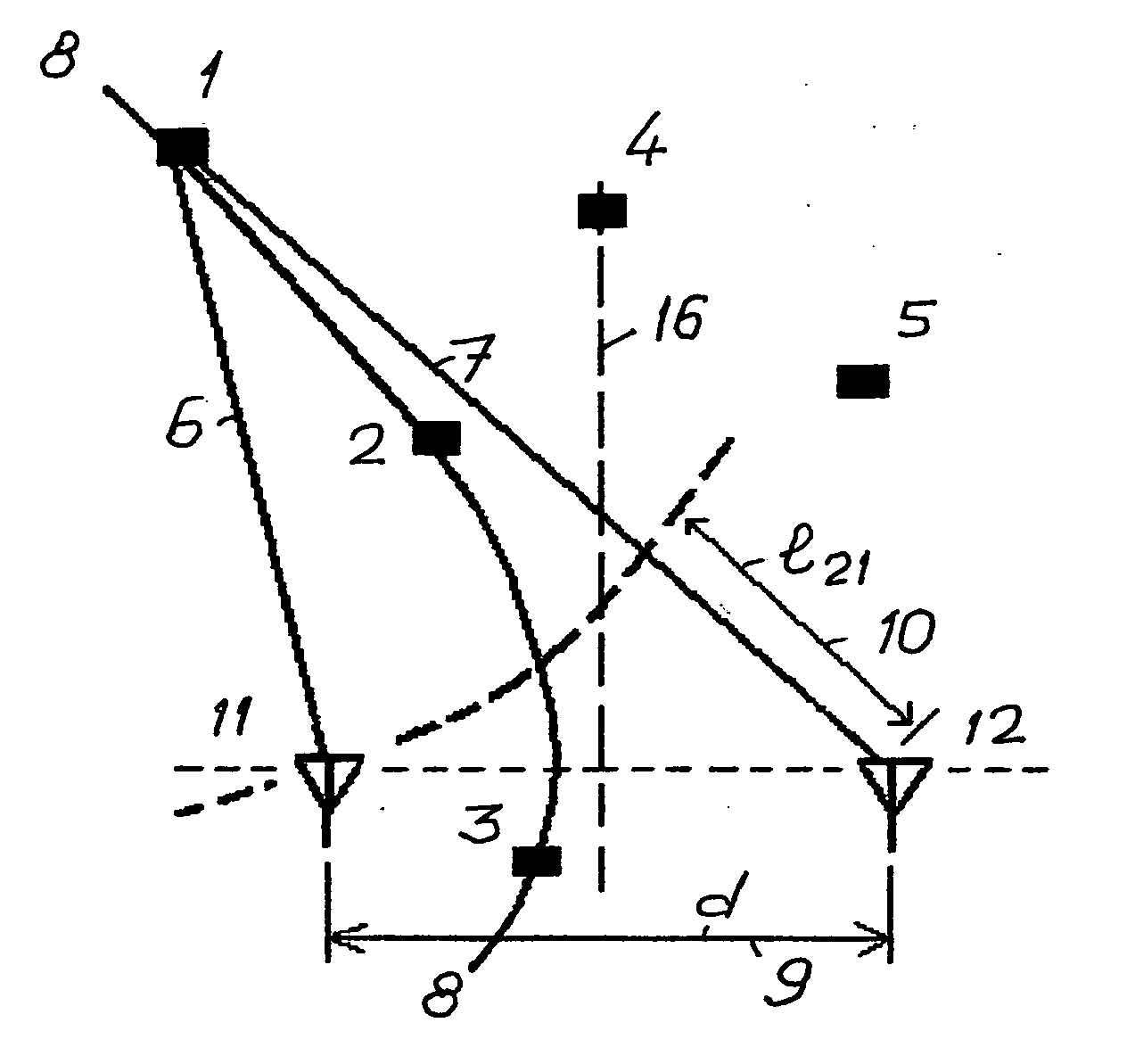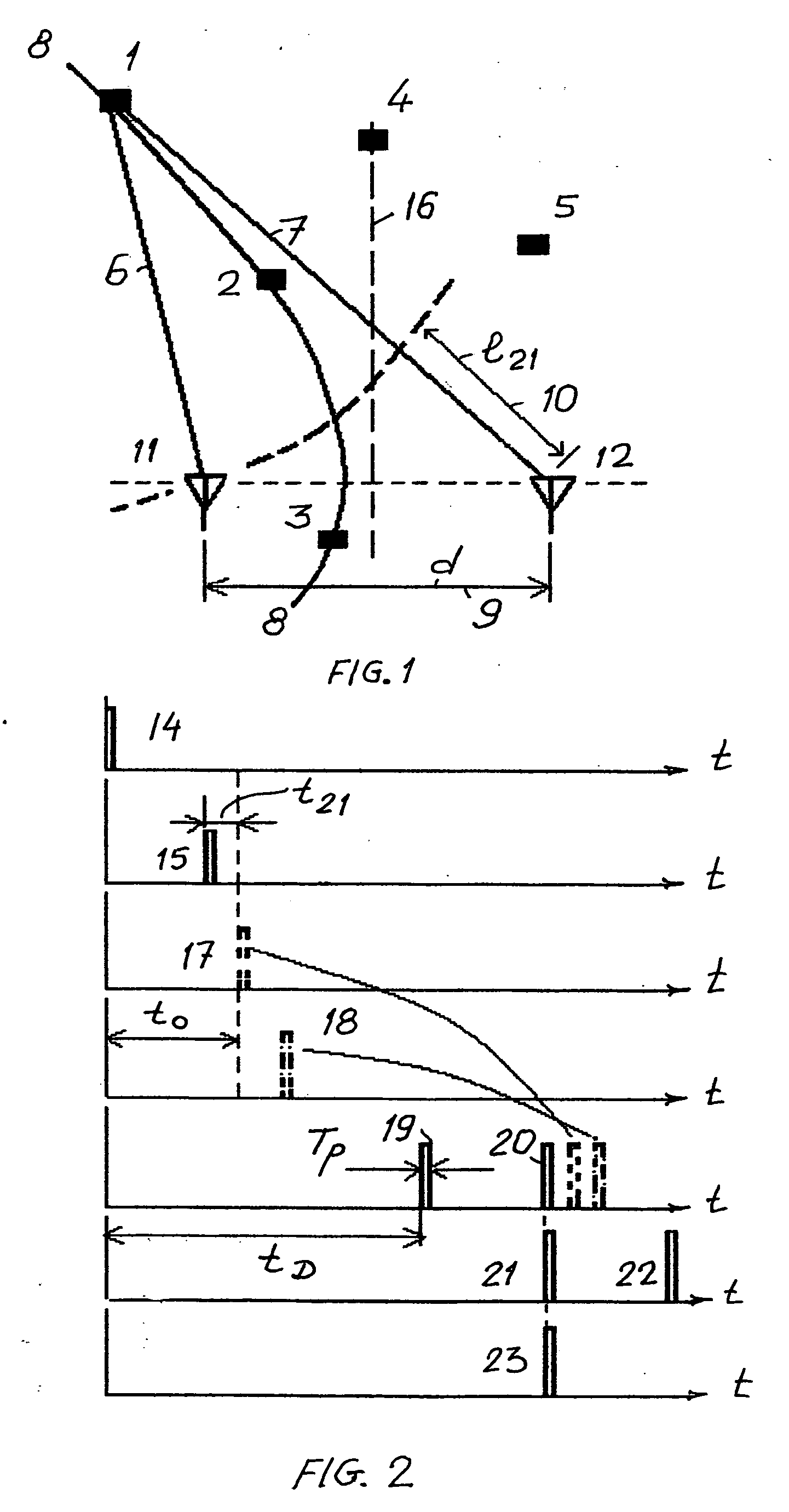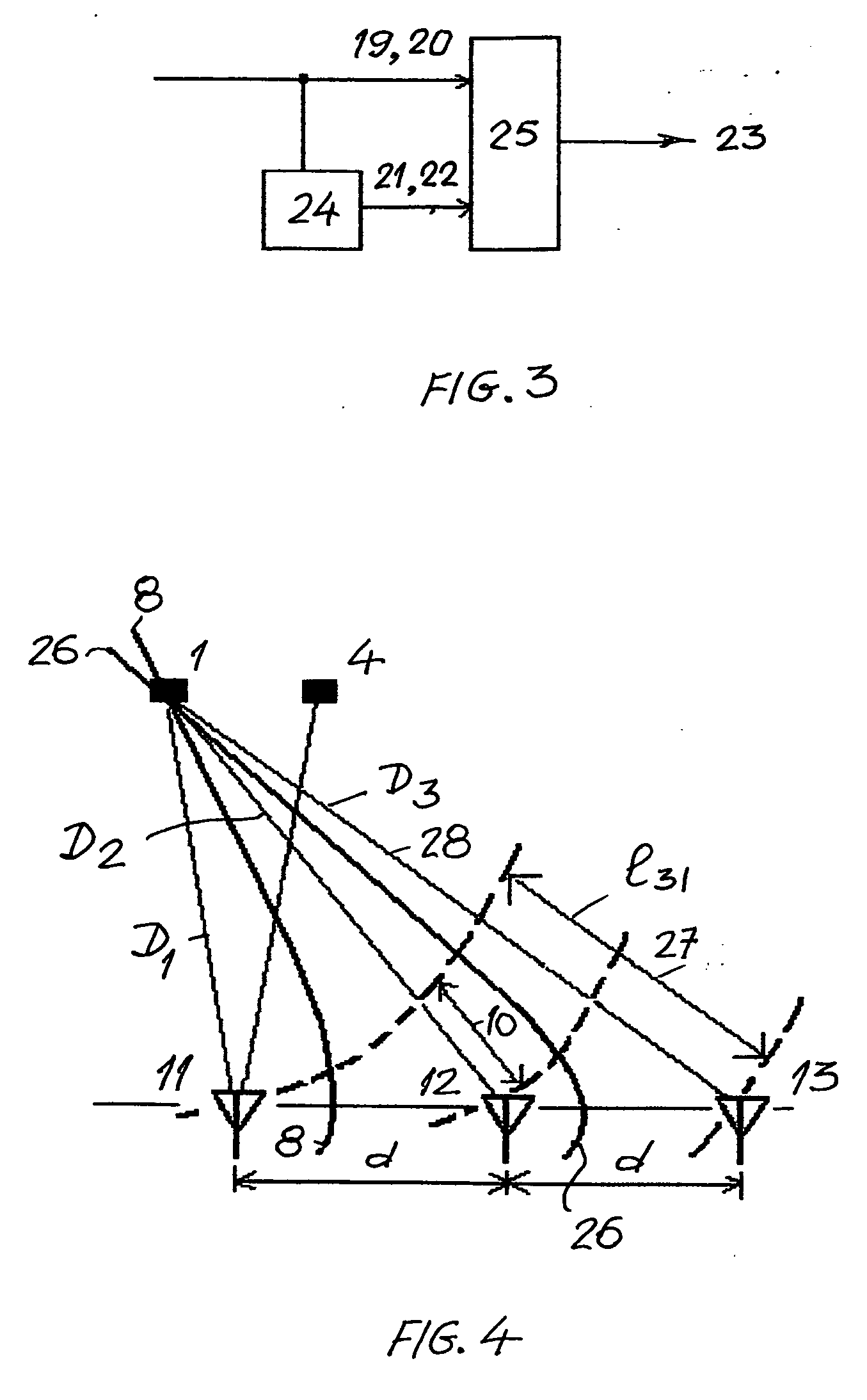Radio frequency identification of tagged articles
a radio frequency identification and article technology, applied in the direction of reradiation, indirect connection of subscribers, visible signalling systems, etc., can solve the problems of inability to teach, or even suggest, any rfid method and system possessing, above-prior art patents fail to teach, etc., to increase the probability of reading the codes, reduce the time of search, and increase the noise immunity
- Summary
- Abstract
- Description
- Claims
- Application Information
AI Technical Summary
Benefits of technology
Problems solved by technology
Method used
Image
Examples
Embodiment Construction
[0057] With reference to the drawings, the procedure of the activation of tags located within an interrogation zone is shown on FIGS. 1 and 2. A tag can be located randomly in points, for example, from Point 1 to Point 5, representing tags 1 to 5 locating at these points on a flat surface in a two-dimensional interrogation zone. If a tag is located at Point 1 and is transmitting a signal, the latter signal 10 reaches the antenna 11 with time delay tD and is received by the antennae 11 and 12 with a time delay having a path length difference l21. This path length difference is constant for any location of tags 1, 2 or 3, for example, on a hyperbolic curve 8.
[0058] Whereas in a reversed situation, namely, signals 14 and 15 are simultaneously transmitted by antennae 11 and 12 respectively, the signal 15 from antenna 12 will reach any tag located on the curve 8 with a delay of 121 / C relative to the signal 14, where C is a signal propagation velocity in the given environment. But if the...
PUM
 Login to View More
Login to View More Abstract
Description
Claims
Application Information
 Login to View More
Login to View More - R&D
- Intellectual Property
- Life Sciences
- Materials
- Tech Scout
- Unparalleled Data Quality
- Higher Quality Content
- 60% Fewer Hallucinations
Browse by: Latest US Patents, China's latest patents, Technical Efficacy Thesaurus, Application Domain, Technology Topic, Popular Technical Reports.
© 2025 PatSnap. All rights reserved.Legal|Privacy policy|Modern Slavery Act Transparency Statement|Sitemap|About US| Contact US: help@patsnap.com



